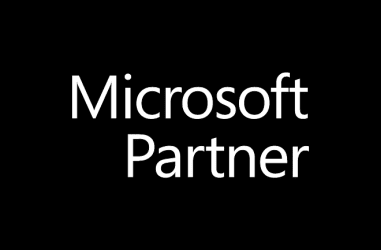How to improve your cyber security – affordable, practical advice for businesses.
Step 1 – Backing up your data
Think about how much you rely on your business-critical data, such as customer details, quotes, orders, and payment details. Now imagine how long you would be able to operate without them.
All businesses, regardless of size, should take regular backups of their important data, and make sure that these backups are recent and can be restored. By doing this, you’re ensuring your business can still function following the impact of flood, fire, physical damage or theft.
Furthermore, if you have backups of your data that you can quickly recover, you can’t be blackmailed by ransomware attacks.
5 things to consider when backing up your data.
- Identify what data you need to back up
- Keep your backup separate from your computer
- Consider the cloud
- Read the excellent cloud security guidance from the NCSC
- Make backing up part of your everyday business
Step 2 – Protecting your organisation from malware
Malicious software (also known as ‘malware’) is software or web content that can harm your organisation, such as the recent WannaCry outbreak. The most well-known form of malware is viruses, which are self-copying programs that infect legitimate software.
This section contains 5 free and easy-to-implement tips that can help prevent malware damaging your organisation.
- Install (and turn on) antivirus software
- Prevent staff from downloading dodgy apps
- Keep all your IT equipment up to date (patching)
- Control how USB drives (and memory cards) can be used
- Switch on your firewall
Step 3 – Keeping your smartphones (and tablets) safe
Mobile technology is now an essential part of modern business, with more of our data being stored on tablets and smartphones. What’s more, these devices are now as powerful as traditional computers, and because they often leave the safety of the office (and home), they need even more protection than ‘desktop’ equipment.
With this in mind, here are 5 quick tips that can help keep your mobile devices (and the information stored on them) secure.
- Switch on password protection
- Make sure lost or stolen devices can be tracked, locked or wiped
- Keep your device up to date
- Keep your apps up to date
- Don’t connect to unknown Wi-Fi Hotspots
Step 4 – Using passwords to protect your data
Your laptops, computers, tablets and smartphones will contain a lot of your own business-critical data, the personal information of your customers, and also details of the online accounts that you access. It is essential that this data is available to you, but not available to unauthorised users.
Passwords – when implemented correctly – are a free, easy and effective way to prevent unauthorised users accessing your devices. This section outlines 5 things to keep in mind when using passwords.
- Make sure you switch on password protection
- Use two-factor authentication for ‘important’ accounts
- Avoid using predictable passwords
- Help your staff cope with ‘password overload’
- Change all default passwords
Step 5 – Avoiding phishing attacks
In a typical phishing attack, scammers send fake emails to thousands of people, asking for sensitive information (such as bank details), or containing links to bad websites. They might try to trick you into sending money, steal your details to sell on, or they may have political or ideological motives for accessing your organisation’s information.
Phishing emails are getting harder to spot, and some will still get past even the most observant users. Whatever your business, however big or small it is, you will receive phishing attacks at some point. This section contains some easy steps to help you identify the most common phishing attacks, but be aware that there is a limit to what you can expect your users to do.
- Configure accounts to reduce the impact of successful attacks
- Think about how you operate
- Check for the obvious signs of phishing
- Report all attacks
- Check your digital footprint
Next Steps
Want to know more? The NCSC have put together a great downloadable guide to help you:
The NCSC small business guide: affordable and practicable advice for businesses.
If you want to improve your cyber security further, then you can also seek certification under the Cyber Essentials scheme, which has the benefit of demonstrating to your clients (or prospective clients) that you take the protection of their data seriously.
Or if you need some specific advice, please contact us and we’d be happy to help.
–
Thanks to NCSC for the information in this article Small Business Guide to Cyber Security - a great source of cybersecurity advice from the Government at ncsc.gov.uk. Crown Copyright, content reproduced under license







































